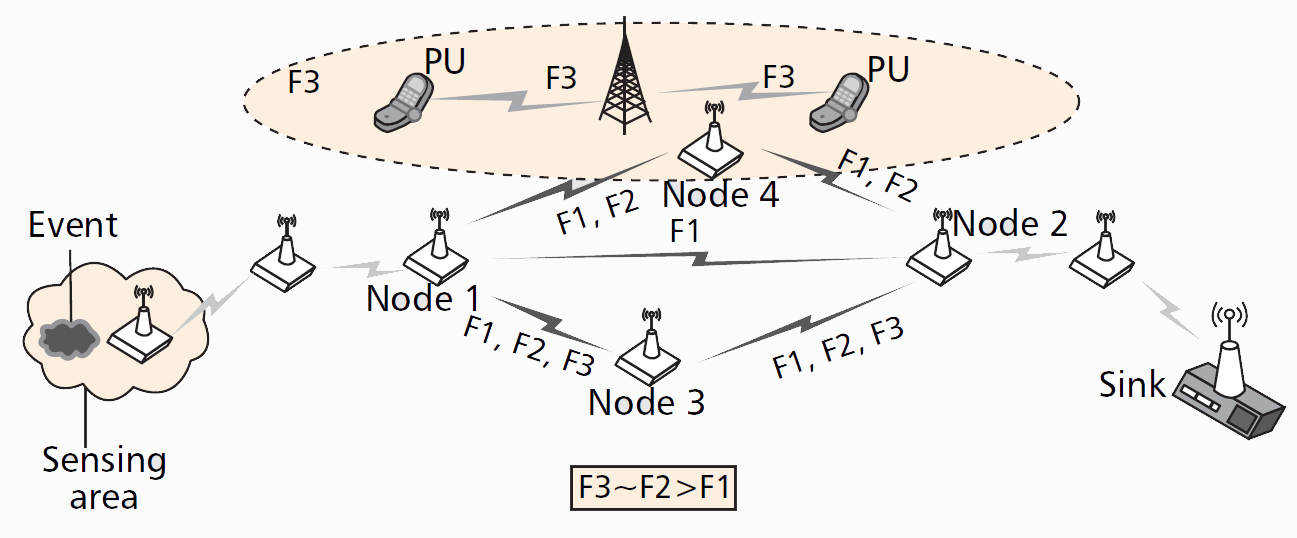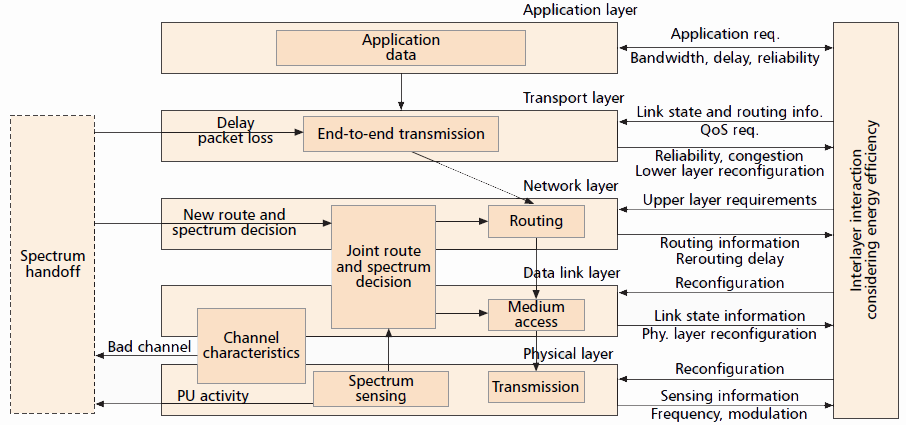TUBITAK 110E249
Cognitive Radio Sensor Networks (2011-2014)

Cognitive Radio Sensor Networks (CRSN)
- Funded by: TUBITAK 110E249
- Period: Feb 2011 – Jan 2014
Wireless Sensor Networks (WSN) exclusively operate over unlicensed bands. Today, significant increase in the applications that use these bands brings about the coexistence problem. Hence, WSN needs additional capabilities to combat the interference incurred by the other applications.

A promising solution is to use the Cognitive Radio (CR) technology to arm the sensor nodes with opportunistic spectrum access (OSA) capability. Towards this end, cognitive radio sensor network (CRSN) is a recently emerging paradigm that aims to utilize the unique features provided by CR concept to incorporate additional capabilities to WSN. A CRSN is a distributed network of wireless cognitive radio sensor nodes, which sense an event signal and collaboratively communicate their readings over dynamically available spectrum bands in a multi-hop manner ultimately to satisfy the application-specific requirements.
OSA enables the use of the most suitable channel for application-specific requirements. This adaptability can also be employed to adjust transmission parameters to reduce power consumption. The existing schemes developed to obtain spectrum awareness for cognitive radios almost never consider power consumption problem, which is clearly a critical issue for CRSN.

Reduced power consumption via OSA not only extends battery-constrained life-time of sensor nodes, but also limits overall energy consumption by sensor network. Thus, natural gaseous emission and dissipated heat by sensor network can be significantly reduced with the help of OSA to lead green distributed sensing networks.
